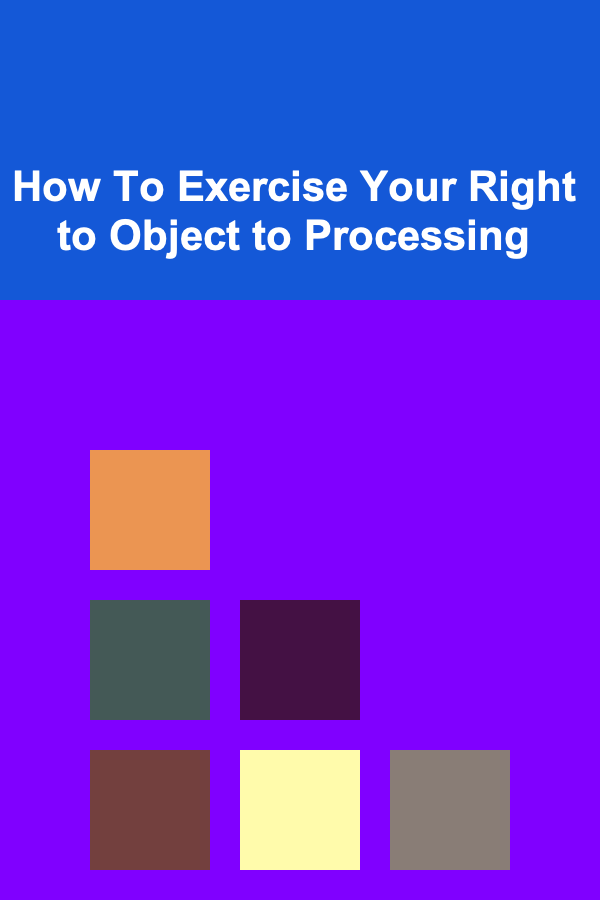
How to Throw Playing Cards for Decision Making
ebook include PDF & Audio bundle (Micro Guide)
$12.99$6.99
Limited Time Offer! Order within the next:
Not available at this time

Decision-making is a fundamental part of daily life, from minor choices like what to eat for dinner to major life-changing decisions, such as where to live or which career path to pursue. While most decision-making processes are based on logical reasoning, many people find themselves relying on creative or unconventional methods to help them decide when they feel stuck or overwhelmed. One such method involves using playing cards to aid in making decisions.
Throwing playing cards for decision-making may seem whimsical, but it is rooted in ancient traditions of using chance and randomness to guide choices. Whether you are contemplating a personal dilemma or facing a business decision, throwing cards can serve as a tool to break the deadlock and help clear your mind. This article will delve into the history of using cards for decision-making, the psychology behind this practice, and practical tips on how to throw playing cards for making decisions in a structured and effective way.
The History and Origins of Using Cards for Decision Making
Playing cards have a rich and fascinating history, extending back centuries. Their origins are believed to be in China during the Tang Dynasty (618-907 AD), where early forms of card games were played using paper or bamboo. However, the modern deck of playing cards that we recognize today began to take shape in Europe during the 14th century. Since then, cards have been used in various contexts beyond entertainment, including fortune-telling, divination, and, more recently, decision-making.
The use of cards in divination is most notably associated with tarot cards, which originated in the 15th century. While tarot cards are often linked to fortune-telling and spiritual guidance, the practice of using regular playing cards to make decisions has become a popular and more accessible alternative. Historically, people have used random events---such as the throw of dice, the drawing of lots, or the flipping of coins---as methods for resolving uncertain situations. Similarly, playing cards have become a symbolic tool for drawing answers or guidance when logic alone doesn't provide a clear solution.
Using playing cards for decision-making is often seen as a way to "let go" of control and trust the randomness of the process. By relying on the uncertainty of the card throw, individuals can take their minds off the pressure of making a perfect decision and allow intuition or fate to play a part in the process.
The Psychology Behind Using Cards for Decision Making
Decision-making can be a stressful and sometimes paralyzing process, especially when faced with multiple options or an unclear outcome. In these moments, it's easy to become overwhelmed by the desire to make the "best" decision, leading to what psychologists call "analysis paralysis." When this happens, the decision-maker often struggles to make any choice at all, despite the fact that a timely decision may be necessary.
Throwing playing cards for decision-making can help break this cycle of indecision in several ways:
2.1 Reducing Pressure
Throwing cards for decision-making takes away the burden of responsibility from the individual. In a traditional decision-making process, the person is expected to be entirely responsible for the outcome. However, when using cards, the randomness of the throw reduces the pressure, as the individual can interpret the results as a guide rather than an absolute answer.
2.2 Encouraging Trust in Intuition
While logic and reason are important, intuition can also play a significant role in decision-making. The act of throwing cards introduces an element of randomness, which invites individuals to trust their gut feelings and instincts. The randomness encourages the decision-maker to rely on their subconscious understanding of the situation, which may be more insightful than purely rational analysis.
2.3 Promoting Detachment
Sometimes, emotions can cloud our judgment, particularly when we have strong feelings about a decision. Throwing cards helps create emotional distance by introducing an element of chance, which can make it easier for individuals to step back and view the situation more objectively. This detachment can lead to greater clarity in decision-making, as the individual is not solely focused on the emotional stakes of the decision.
2.4 Symbolism and Meaning
Playing cards, especially when used in a structured manner, carry symbolism and meaning that can resonate with the decision-maker. Each card has associations---whether it's the number, suit, or historical interpretations---that can guide the person in making their decision. This symbolism provides a framework for interpreting the results, which may lead to new insights or perspectives that weren't initially considered.
Different Methods for Throwing Playing Cards
There are various ways to use playing cards to make decisions, and the method chosen can depend on the complexity of the situation, the desired level of involvement, and the specific question at hand. Below are several methods for throwing cards that can help guide your decision-making process.
3.1 The Basic Draw Method
This is the simplest way to use playing cards for decision-making. It involves selecting one card at random and interpreting its meaning based on the suit, number, or face value. This method is ideal for quick, straightforward decisions, such as choosing between two options.
Steps:
- Shuffle the deck of playing cards thoroughly.
- Focus on your question or decision while holding the deck.
- Draw one card from the deck without looking.
- Analyze the card's suit, number, and face to draw meaning.
- Hearts represent emotions, relationships, or personal matters.
- Diamonds symbolize material concerns, finances, or business.
- Clubs indicate action, work, and creativity.
- Spades represent challenges, obstacles, or decisions that require caution.
- Use the meaning of the card to guide your decision.
For example, drawing the Ace of Spades could suggest that caution is needed, while the Queen of Hearts may indicate a decision involving emotions or relationships.
3.2 The Multiple Card Spread Method
For more complex decisions, a multiple card spread can offer deeper insights. In this method, several cards are drawn to represent different aspects of the decision-making process, such as past influences, present circumstances, and potential future outcomes. This method is useful for situations where multiple factors need to be considered.
Steps:
- Shuffle the deck while focusing on your decision.
- Draw three cards and assign each one to a specific question:
- First Card: Represents the past or factors that led to the current decision.
- Second Card: Represents the present situation or current influences.
- Third Card: Represents the future or potential outcome based on the decision.
- Interpret the cards based on their meanings and symbolism.
For instance, if you're deciding whether to take a job offer, the first card may indicate past experiences, the second card may reveal your current feelings about the job, and the third card could suggest how the job will impact your future.
3.3 The Yes or No Method
This method is particularly effective for making simple binary decisions, such as whether to take a specific action or not. By assigning each card a "yes" or "no" value, you can create a clear outcome based on the card you draw.
Steps:
- Shuffle the deck of cards.
- Assign half of the cards to represent "yes" (for example, hearts and clubs) and the other half to represent "no" (diamonds and spades).
- Draw a card from the deck.
- If the card corresponds to a "yes" suit, the answer is yes; if it corresponds to a "no" suit, the answer is no.
This method is ideal for quick decisions when you need a clear, definitive answer.
3.4 The Decision Tree Method
For more structured decision-making, the decision tree method uses playing cards to map out the various outcomes of each potential choice. This method works well for situations where there are multiple choices, and you want to visualize the consequences of each.
Steps:
- Draw a card for each potential option in your decision.
- Interpret the meaning of each card as it relates to the option.
- Create a visual decision tree based on the outcomes.
- Use the decision tree to analyze each possible path and its impact.
This method is particularly useful for decisions that involve risk assessment or the weighing of multiple variables.
Practical Considerations and Tips
While throwing playing cards for decision-making can be fun and insightful, it's important to approach the practice with the right mindset. Here are some tips to make the process more effective:
- Clarify Your Question: The clearer your question, the more effective the cards will be in providing insight. Be specific about what you are deciding.
- Trust the Process: Let go of the need for a "perfect" decision. Trust that the randomness of the cards will help guide you toward an answer.
- Reflect on the Results: After drawing the cards, take a moment to reflect on their meanings and how they apply to your decision. Don't rush the interpretation.
- Use the Cards as a Guide: While cards can provide useful guidance, remember that they are just one tool in your decision-making toolbox. Use your logic and intuition alongside the cards to make your final choice.
Conclusion
Throwing playing cards for decision-making may seem like an unconventional approach, but it can be a fun and insightful way to break free from analysis paralysis and gain new perspectives. Whether used for simple yes-or-no decisions or more complex, multi-faceted choices, playing cards offer a unique method for reflecting on options and trusting in the randomness of fate. By understanding the psychology behind this practice and using the right methods, you can harness the power of playing cards to guide your decision-making process in a creative and meaningful way.

How to Interpret Mythological Colors and Their Significance
Read More
How to Lock Your Doors the Right Way to Prevent Break-ins
Read More
How to Manage Seasonal Family Activities with Effective Planning
Read More
How to Upgrade Your Existing Home Security System
Read More
How To Understand the Seasons and Earth's Tilt
Read More
How To Exercise Your Right to Object to Processing
Read MoreOther Products

How to Interpret Mythological Colors and Their Significance
Read More
How to Lock Your Doors the Right Way to Prevent Break-ins
Read More
How to Manage Seasonal Family Activities with Effective Planning
Read More
How to Upgrade Your Existing Home Security System
Read More
How To Understand the Seasons and Earth's Tilt
Read More